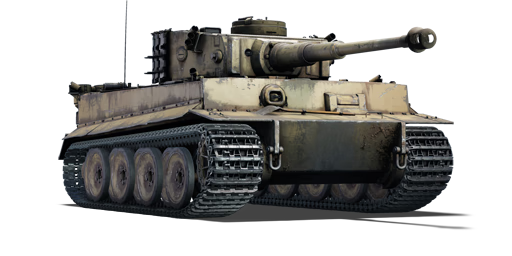



The Panzerkampfwagen VI Ausführung H1 (Tiger H1) is the first (early-production) variant of the Tiger I heavy tank family, designed and built by Henschel and used by the German Army during World War II. It offered the German Army its first armoured fighting vehicle equipped with the 88 mm Kampfwagenkanone (KwK) 36 tank gun, developed from the 88 mm Flugabwehrkanone (FlaK) 36 anti-aircraft gun. Henschel and Ferdinand Porsche were ordered on May 26, 1941, to submit proposals for a 45-ton heavy tank that would be available by June 1942. Porsche developed an improved version of its VK 30.01 (P) prototype (which was originally intended to compete for the Panther contract), while Henschel developed two prototypes: the VK 45.01 (H) H1 with an 8.8 cm KwK36 L/56 tank gun and the VK 45.01 (H) H2 with a 7.5 cm KwK42 L/70 tank gun. The Henschel VK 45.01 (H) H1 prototype was accepted after evaluation, primarily because the Porsche VK 45.01 (P) prototype design used a petrol-electric transmission system that required large amounts of copper for the manufacture of its electrical drivetrain components, a strategic war material of which Germany had limited supplies. Early Tiger H1s with the Krupp-designed turret featured a high commander cupola. Later in the war, the design was modified, resulting in the Tiger E, which had a new dome-shaped cast-armour commander's cupola and a ring installed on the commander's cupola to accommodate the mounting of an anti-aircraft light machine gun. There are additionally five S-Mine dischargers on the hull-roof, three on the left side and two on the right. Two Feifel air cleaner units designed for dusty environments are located on the hull's back. Between August 1942 and August 1944, a total of 1,347 units were constructed. The Tiger I was phased out of production after August 1944 in favour of the Tiger II.
Introduced in the Closed Beta Test for Ground Forces before Update 1.41, the Tiger H1 was the German Army's first truly heavy tank during World War II, due mostly to combat experience against the French and British Matilda heavy tanks, which demonstrated that the German Army needed better armed and armoured tanks. Within 2,500 metres, Tiger H1 had higher penetration than the 75 mm KwK40 L/43 on the Sturmgeschütz IIIs and Panzer IVs but poorer penetration than the 75 mm KwK42 L/70 on the Panthers. At longer ranges, the 88 mm KwK36 L/56 performed better in terms of penetration and accuracy. The Tiger H1, capable of fighting any adversary at any range, is a true marvel of German engineering during World War II and will undoubtedly reward players well.
| Ammunition | Type | Armor penetration (mm) at a distance: | |||||
|---|---|---|---|---|---|---|---|
| 10 m | 100 m | 500 m | 1000 m | 1500 m | 2000 m | ||
| APCBC | 165 | 162 | 151 | 139 | 127 | 117 | |
| HE | 18 | 18 | 17 | 15 | 14 | 13 | |
| APCBC | 153 | 151 | 140 | 128 | 116 | 106 | |
| HEAT | 110 | 110 | 110 | 110 | 110 | 110 | |
| Belt | Belt filling | Armor penetration (mm) at a distance: | |||||
|---|---|---|---|---|---|---|---|
| 10 m | 100 m | 500 m | 1000 m | 1500 m | 2000 m | ||
| AP/AP/AP-T | 13 | 12 | 7 | 3 | 2 | 0 | |












Mobility | |
|---|---|
Protection |
|---|
Firepower | |
|---|---|